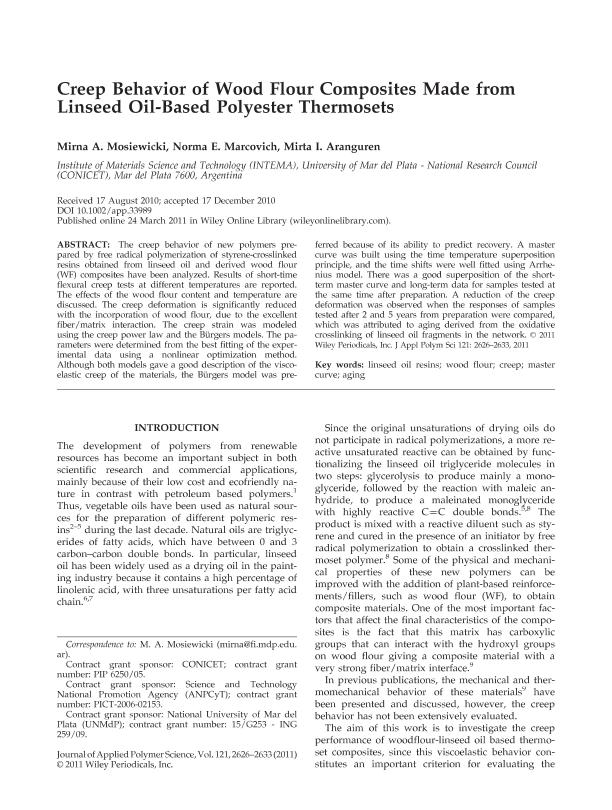Artículo
Creep behavior of wood flour composites made from linseed oil-based polyester thermosets
Fecha de publicación:
03/2011
Editorial:
John Wiley & Sons Inc.
Revista:
Journal of Applied Polymer Science
ISSN:
0021-8995
Idioma:
Inglés
Tipo de recurso:
Artículo publicado
Clasificación temática:
Resumen
The creep behavior of new polymers prepared by free radical polymerization of styrene-crosslinked resins obtained from linseed oil and derived wood flour (WF) composites have been analyzed. Results of short-time flexural creep tests at different temperatures are reported. The effects of the wood flour content and temperature are discussed. The creep deformation is significantly reduced with the incorporation of wood flour, due to the excellent fiber/matrix interaction. The creep strain was modeled using the creep power law and the Bu¨rgers models. The parameters were determined from the best fitting of the experimental data using a nonlinear optimization method. Although both models gave a good description of the viscoelastic creep of the materials, the Bu¨rgers model was preferred because of its ability to predict recovery. A master curve was built using the time temperature superposition principle, and the time shifts were well fitted using Arrhenius model. There was a good superposition of the shortterm master curve and long-term data for samples tested at the same time after preparation. A reduction of the creep deformation was observed when the responses of samples tested after 2 and 5 years from preparation were compared, which was attributed to aging derived from the oxidative crosslinking of linseed oil fragments in the network.
Palabras clave:
Creep behavior
,
Vegetable oils
,
WOOD FLOUR
,
Composites
Archivos asociados
Licencia
Identificadores
Colecciones
Articulos(INTEMA)
Articulos de INST.DE INV.EN CIENCIA Y TECNOL.MATERIALES (I)
Articulos de INST.DE INV.EN CIENCIA Y TECNOL.MATERIALES (I)
Citación
Mosiewicki, Mirna Alejandra; Marcovich, Norma Esther; Aranguren, Mirta Ines; Creep behavior of wood flour composites made from linseed oil-based polyester thermosets; John Wiley & Sons Inc.; Journal of Applied Polymer Science; 121; 5; 3-2011; 2626-2633
Compartir
Altmétricas




